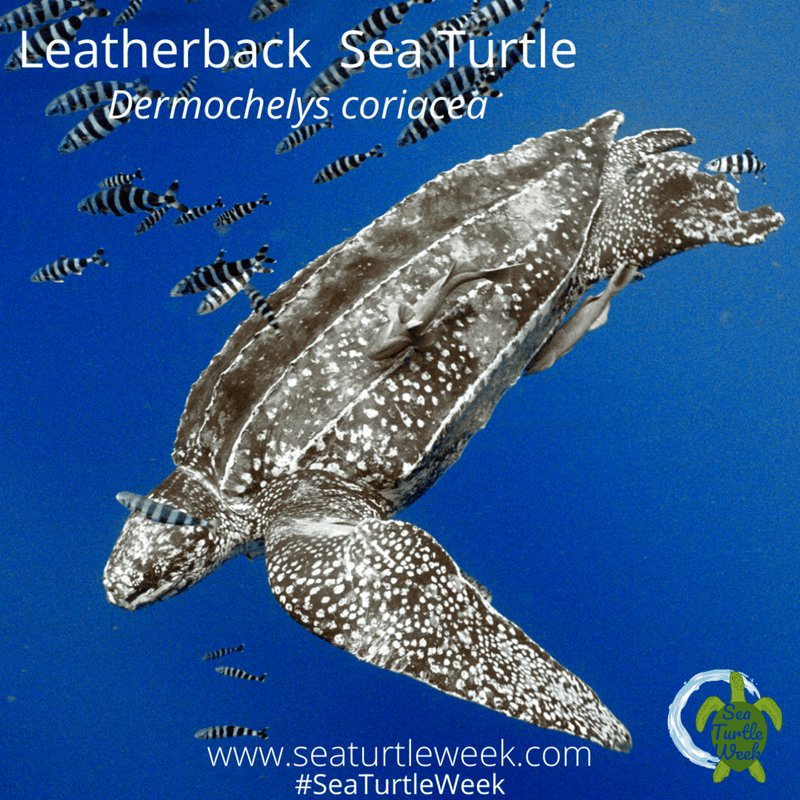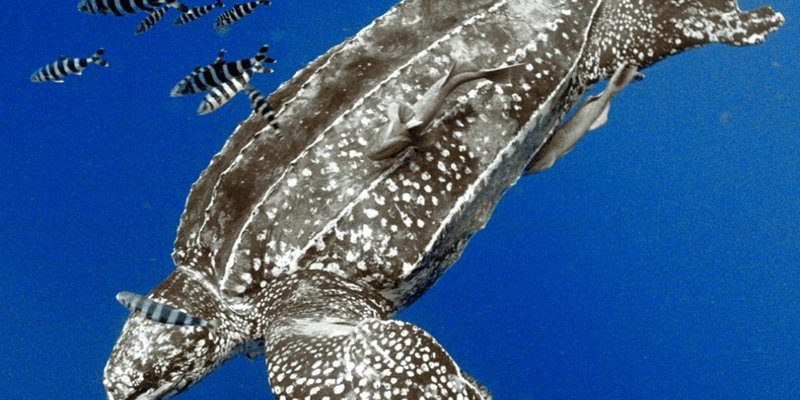
Leatherback turtles are fascinating not just because of their size—they can weigh as much as 2,000 pounds! They also have a remarkable set of features that enable them to navigate their ocean habitats with ease. It’s like they’ve been designed specifically for life in water, equipped with all the tools they need to succeed. Grab a cup of coffee, and let’s dive into the world of adaptations that make these turtles true champions of the sea.
Body Structure: A Streamlined Design
One of the first things you’ll notice about the leatherback turtle is its unique body shape. Unlike other turtles, which have hard, bony shells, leatherbacks have a flexible carapace covered in leathery skin. This design is essential for reducing drag as they swim through the water. Picture a sleek sports car cutting through the wind—this turtle moves in a similar fashion, allowing it to glide effortlessly.
The streamlined shape helps with two things: speed and energy efficiency. When a leatherback turtle swims, it can cover great distances without expending too much energy. This is crucial, especially since some leatherbacks travel over 10,000 miles in a single migration. That’s like going from New York to Los Angeles and back again—twice! These turtles have truly mastered the art of long-distance swimming.
Moreover, their powerful front flippers not only aid in propelling them through the water but also assist in steering. With flippers that can stretch up to 9 feet wide, leatherbacks can navigate effortlessly, avoiding obstacles and predators alike. Honestly, it’s quite impressive how nature has engineered these creatures to thrive in such a challenging environment.
Temperature Regulation: Staying Warm in Cold Waters
You might be wondering how a creature like the leatherback turtle can thrive in chilly ocean waters. The secret lies in their unique ability to regulate their body temperature. Unlike most reptiles, leatherback turtles are endothermic. This means they can maintain a body temperature that’s higher than the surrounding water, even in frigid environments.
Their large size plays a significant role in this adaptation. With a mass that can exceed 1,000 pounds, they have a high metabolic rate that generates heat. Additionally, their thick layer of fat, or blubber, beneath the skin acts as insulation, keeping them warm while they’re swimming in icy waters. Imagine bundling up with layers before heading out into the cold—this is what leatherbacks do naturally in the ocean.
Moreover, leatherbacks have a unique vascular system that helps them conserve heat. Their core temperature can be maintained even when they dive deep into freezing waters. This ability allows them to explore deeper regions of the ocean where many other species can’t survive, giving them access to abundant food sources, like jellyfish.
Diet: Specialized Feeders for Jellyfish
Speaking of jellyfish, the leatherback turtle’s diet is another fascinating adaptation. These turtles are primarily jellyfish eaters, and their bodies are specifically designed to handle this unique food source. Their large mouths and flexible throat allow them to consume jellyfish with ease, and their sharp, pointed beak helps them catch slippery prey.
What’s truly impressive is the leatherback’s ability to locate and feed on jellyfish. While many marine creatures can easily spot their food, leatherbacks rely on something a little different. They have sensitive nerve endings in their mouths and throats, which help them detect the jellyfish’s movements. It’s like having a built-in radar system for food!
However, their diet doesn’t come without challenges. Leatherbacks can accidentally consume plastic debris, mistaking it for jellyfish. This is a significant threat to their survival, illustrating the need for ocean conservation efforts. Protecting these turtles means protecting their food sources, which are essential for their survival.
Your Role in Conservation: Be a Turtle Advocate
Now that you know more about the incredible adaptations of the leatherback turtle, you might be wondering how you can help protect these magnificent creatures. Conservation efforts are vital for their survival, and there are several ways you can get involved—no matter where you live.
– Reduce plastic waste: One of the biggest threats to leatherbacks is the plastic pollution in the ocean. By reducing your use of single-use plastics and participating in clean-up efforts, you can help keep the oceans cleaner.
– Support marine conservation organizations: Many organizations focus on protecting turtle habitats, educating the public, and enforcing regulations. Your donations or volunteer efforts can make a meaningful difference.
– Spread awareness: Share what you’ve learned about leatherbacks with friends and family. The more people know about these amazing turtles and their struggles, the more support they’ll receive.
You don’t have to be an oceanographer to make an impact. Every little action counts, and together we can work toward a healthier ocean.
Migration: A Journey of Survival
The migration of leatherback turtles is a remarkable aspect of their life cycle. Every year, these turtles embark on epic journeys across oceans, often traveling thousands of miles from their nesting sites to feeding grounds. This long trek is not just about finding food; it’s a matter of survival.
During migration, leatherbacks navigate using the Earth’s magnetic fields. It’s like having a built-in GPS system! They know when to head to warmer waters or return to their breeding grounds. This instinctual behavior has been honed over millions of years, ensuring their species continues to thrive.
Interestingly, many leatherbacks return to the same nesting beaches year after year. This loyalty to their breeding grounds underscores the importance of protecting these habitats. If we don’t take action, rising sea levels and pollution can threaten their nesting sites, jeopardizing future generations of these magnificent turtles.
Threats and Challenges: The Road Ahead
Despite their impressive adaptations, leatherback turtles face numerous threats today. From climate change and habitat loss to pollution and fishing bycatch, their survival is at risk. Let’s break down some of the main challenges these turtles encounter.
– Climate Change: Rising ocean temperatures and changing currents affect not only their feeding grounds but also nesting beaches. Warmer sand temperatures can skew the sex ratio of hatchlings, leading to fewer females.
– Bycatch: Leatherbacks often get accidentally caught in fishing gear like nets and lines. This unintentional catch can lead to injury or death, posing a significant risk to their population.
– Pollution: As mentioned earlier, plastic waste in the ocean poses a serious threat. Leatherbacks may ingest harmful debris, which can lead to severe health problems.
Protecting leatherback turtles means addressing these threats head-on. By advocating for policies that reduce plastic use and improve fishing practices, we can contribute to their survival.
The leatherback turtle’s adaptations paint a picture of an extraordinary creature beautifully suited to life in the ocean. From their streamlined bodies to their unique feeding strategies, each feature helps them navigate the challenges of their underwater world. As we learn more about these amazing animals, let’s not forget that their survival is intertwined with our own actions.
By being proactive in conservation efforts, we can play an essential role in ensuring leatherback turtles continue to thrive. So the next time you feel inspired by the ocean, remember the leatherback turtle and the remarkable journey it undertakes. Together, we can make a difference, one step at a time.

